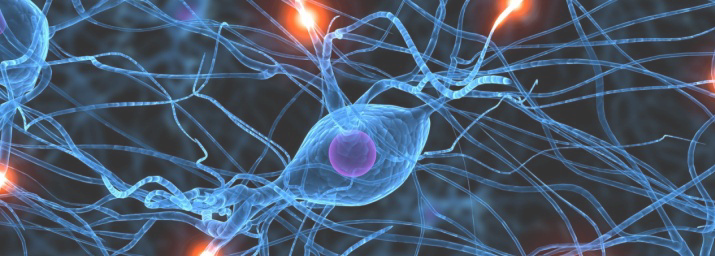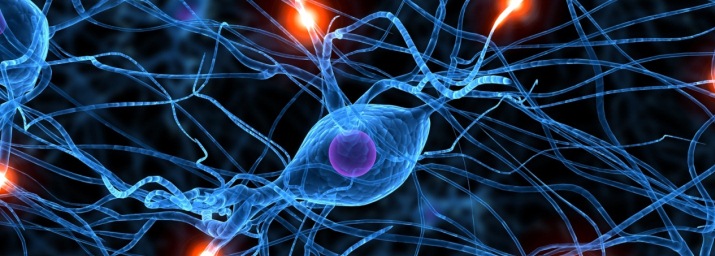

DYNAMICS OF EXCITATORY-INHIBITORY NEURONAL NETWORKS
Cortical networks are known to exhibit a moderate and variable level of order in different temporal and spatial scales, meanwhile the individual neurons fire irregularly. This “emergence of collective order from irregular components” is commonly believed to be a consequence of excitation-inhibition balance in EI networks [1]. All we wish, is to expand existing knowledge about dynamics of neuronal networks.
Ultimate: A recipe for desired dynamics?
It is an ambitious goal to provide a theory-based recipe for the modelers for generation of neural population models with a prescribed list of dynamical properties?
Problem 1: Networks of excitable neurons
We are interested to classify general classes of network of coupled dynamical systems which show the same dynamics seen in realistic neuronal circuits. Before considering EI networks, we first study networks of excitable nodes with purely excitatory or inhibitory synapses, driven by external noise. We explore the effect of the important parameters like noise intensity, connection effective strength, network connectivity, and interaction (synaptic) time constants which based on the existing knowledge, are the most important parameters [2]. So far we have preliminary simulation results which show that searching over parameter space we can reproduce different dynamical states which are seen in nervous systems. We classify the states, the parameter space and the in particular, the transitions from asynchronous to synchronous state and from quiescent to active state. These transition points/ranges are known to be the right states for healthy brains [3]
Then we ask: what are the main dynamical effects of mixing excitatory and inhibitory neurons? Our preliminary results show that some properties like occurrence of power-law dynamics is seen in E networks, while synchronous-irregular dynamics can be observed in I networks (see Figure 1). DO the balanced network inherit these from pure networks? Or more?
Nariman Roohi and Zeinab Koohpeima are engaged in this project.
Problem 2: Response function of the EI networks
In the presence of rhythms or collective oscillations, we could apply the common methodology for nonlinear and high-dimensional oscillators to characterize the system. Here we have a loose giant oscillator consisting of irregular, non-oscillating excitable neurons. Collective Phase Response Function can be defined and explored to classify the phase change of the collective oscillations due to the weak brief stimulations [4]. We have heuristic evidences that the response of EI networks resembles that of type-I oscillators but with strictly negative response (see Figure 2). This should be conceptually independent of the details of neuronal and connectivity parameters (why? Inferred from Ref 8), but classical neural mass models (Wilson-Cowan model) undergo a Hopf bifurcation in the transition to oscillation and so classified as type-II [5]. This should be explored.
Since the collective oscillator has variable amplitude, the amplitude change due to the input pulses, and the relation of the amplitude and the phase (or with the instantaneous period) can be studied: Amplitude will be a measure of extent of spiking activity and its coherence, and the phase will quantify the timing of activity. First point here is that using phase models for large scale brain simulations, and in particular for quantifying functional relationship between brain’s regions, ignore the extent of spiking activity. So a necessary step in the gross simulations will be to consider phase-amplitude oscillator models, like Hopf or WC models.
Aref Pariz and Zeinab Koohpeima are engaged in this research. Interested students are welcome to join.
Problem 3: Effect of structural parameters on the oscillations
There are some facts in the connectivity of the cortical circuits, overlooked in models. Log-normal distribution of the synaptic weights and how the weak and strong synapses are distributed [6] can crucially alter the results of the crude models with always considering narrow distributions. Effect of multiple synapses between the pair of neurons (with supposedly different delays and different strengths [7]), effect of over-expression of bi-directional connections. What could be the effect of breaking cortex E/I golden ratio 80-20?
A key-paper: A very important experimental finding indicates the positive correlation between the amplitude and the instantaneous period of gamma oscillations [8]. This correlation confirms the role of inhibition in the generation of the gamma rhythm and exerts a constraint on the time constants of the E and I synapses, never highlighted in the modeling studies. And much more can be deduced from this article!
Just recently a paper has been published which has experimentally explored the abundance of autaptic connections in layer 5 of cortex in mouse and human, showing >50% of principal cell in this layer have one or multiple autaptic synapses which are about four time stronger than between-cell connections [9]. Its effect on collective dynamics is worth to be explored.
We welcome to interested students to join this research.
References
[1] Wang, X. J. “Neurophysiological and computational principles of cortical rhythms in cognition. Physiological reviews, 90(3) (2010), 1195-1268.
[2] Brunel, Nicolas, and Xiao-Jing Wang. "What determines the frequency of fast network oscillations with irregular neural discharges? I. Synaptic dynamics and excitation-inhibition balance." Journal of neurophysiology (2003).
[3] Massobrio, Paolo, Lucilla de Arcangelis, Valentina Pasquale, Henrik J. Jensen, and Dietmar Plenz. "Criticality as a signature of healthy neural systems." Frontiers in systems neuroscience 9 (2015): 22.
[4] Kawamura, Yoji, Hiroya Nakao, Kensuke Arai, Hiroshi Kori, and Yoshiki Kuramoto. "Collective phase sensitivity." Physical review letters 101, no. 2 (2008): 024101.
[5] Monteiro, L. H. A., M. A. Bussab, and JG Chaui Berlinck. "Analytical results on a Wilson-Cowan neuronal network modified model." Journal of theoretical biology 219, no. 1 (2002): 83-91.
[6] Buzsáki, György, and Kenji Mizuseki. "The log-dynamic brain: how skewed distributions affect network operations." Nature Reviews Neuroscience 15, no. 4 (2014): 264.
[7] Deger, Moritz, Alexander Seeholzer, and Wulfram Gerstner. "Multicontact Co-operativity in Spike-Timing–Dependent Structural Plasticity Stabilizes Networks." Cerebral Cortex 28, no. 4 (2017): 1396-1415.
[8] Atallah, Bassam V., and Massimo Scanziani. "Instantaneous modulation of gamma oscillation frequency by balancing excitation with inhibition." Neuron 62, no. 4 (2009): 566-577.
[9] Lupig Yin et al, “Autapses enhance bursting and coincidence detection in neocortical pyramidal cells” Nature Communications 9, 4890 (2018): 1-12

